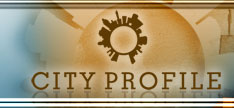Bounded by Mason Street, Post Street, Washington Street and Polk Street, Nob Hill is one of the most coveted and affluent residential districts in the city of San Francisco and was once thick with the city?s wealthiest denizens. In fact, because of the high profile people that once lived in this neighborhood and until now, Nob Hill is often referred to ?Snob Hill.? San Francisco has 44 hill communities and Nob Hill is one of these and is also one of the city?s original seven hills. Some of the grand houses and mansions that once stood here still exist today, but the general feel of the community today is more eclectic, but nonetheless, equally beautiful.
Nob Hill gained its premier status back during the height of the California Gold Rush when cable cars started transporting people up the hill. The elevated neighborhood offers a breathtaking view of the city and nearby attractions. Also, the richest urbanites back then did not want to live ?down the hill? in close proximity to the waterfront since the busy ports are bustling and noisy during the day and associated with lewdness during the night. These rich merchants and entrepreneurs engaged in an unspoken competition on who would build the bigger and better house. These rich urbanites were branded as the Nobs which inspired the name of the hill. Some of the most popular persons who lived in Nob Hill during the Gold Rush were the members of a group referred to as the Big Four: Lelan Stanford, Collis Huntington, Charles Crocker and Mark Hopkins. They were deemed as corrupt and were hated by the people who mockingly branded them as the ?Robber Barons.? All four built magnificent mansions on Nob Hill but not a single one withstood the great 1906 earthquake and fire.
Aside from the opulent neighborhood itself, Nob Hill also houses several attractions, one of which is the Cable Car Museum. Situated on Mason Street, it offers guests a comprehensive look into the history of the popular mode of transportation in San Francisco. There are several vintage cable cars exhibited here as well as memorabilia that can be purchased from the museum?s gift shop. The museum is still used as the barn that serves as the center of operations of San Francisco?s cable car system.
At the heart of Nob Hill, Huntington Park can be found. The site it is located used to be where the house of Collis Huntington (one of the Robber Barons) once stood and was reduced to rubbles by the 1906 earthquake. The park with its thick greenery is an ideal place where one can relax under the trees or sit on one of its numerous benches while admiring the picturesque neighborhood. There is also a playground where children can frolic and enjoy. The centerpiece of the park is a faithful replica of the Fountain of Tortoises found in Rome which adds to the park?s relaxing ambiance.
For visitors who are into religious architecture, Nob Hill is home to the Grace Episcopal Cathedral, West Coast?s biggest Episcopal Church. It is modeled after the famous Notre-Dame Cathedral in Paris and was constructed from 1928 to 1964. The cathedral is known for its ornate stained glass windows and mammoth bronze doors. It is also used as a venue for several musical performances.
There are two hotels located in Nob Hill. First is the Mark Hopkins Hotel which is situated at the site where the Mark Hopkin?s mansion, one of the Robber Barons and railroad magnates, once stood and was destroyed by the earthquake as well. The second hotel is the Fairmont Hotel which is actually a replacement for the original one which also perished in the 1906 fire and earthquake.
Another architectural wonder that can be seen within the perimeters of Nob Hill is the headquarters of the Pacific-Union Club. The Italian inspired building designed by Augustus Laver used to be the mansion of James Flood, who was known as ?Bonanza King? since he accumulated his wealth after discovering a bonanza. It was consequently bought by the Pacific-Union Club and made it into a private social club anchored on its gold rush era heritage. It is one of the few buildings in Nob Hill which survived the 1906 quake.
Other attractions in Nob Hill include the Nob Hill Theatre and a masonic memorial temple right across Grace Episcopal Cathedral.
| |



